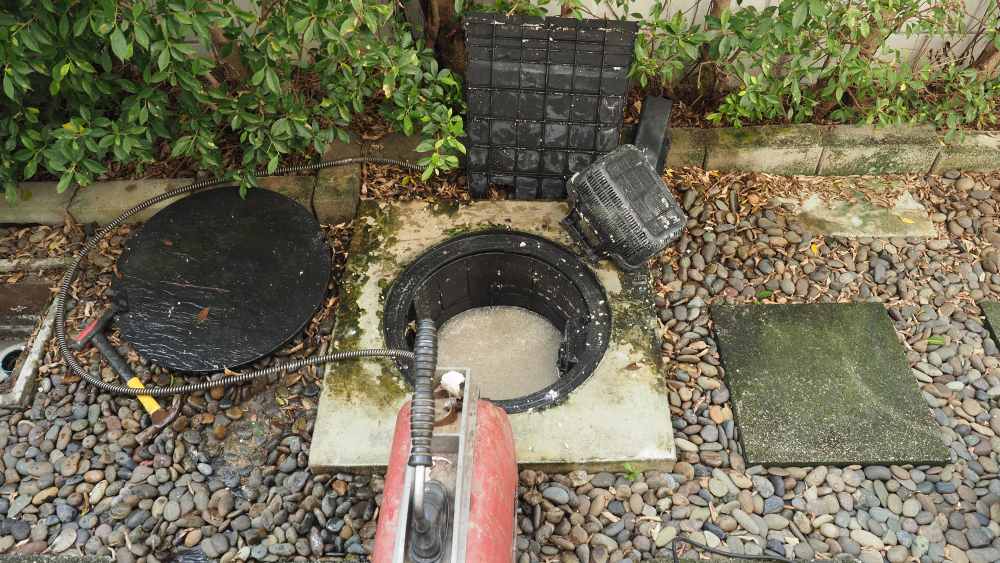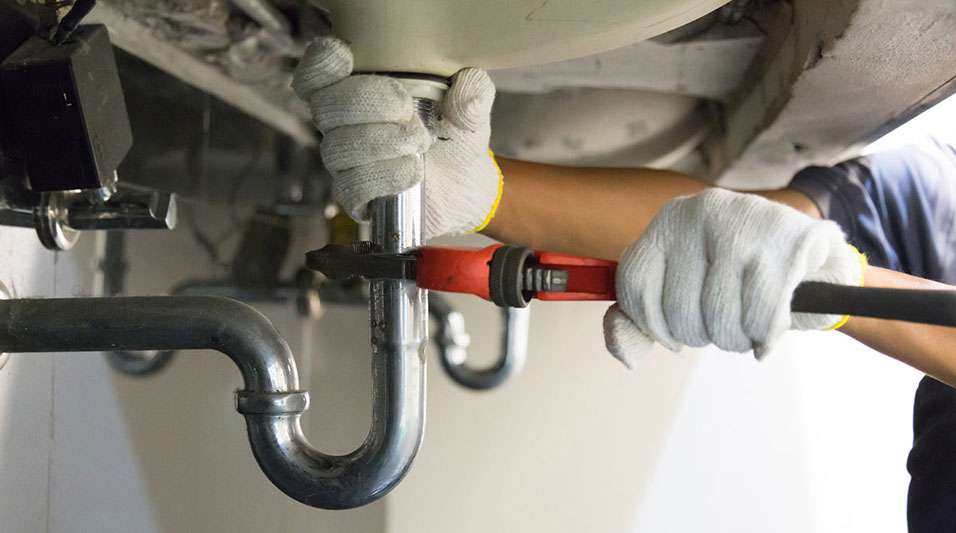Techniques for Clearing a Blocked Drain Before Consulting Plumbing Professionals
Techniques for Clearing a Blocked Drain Before Consulting Plumbing Professionals
Blog Article
This great article further down involving What I learned from trying to deal with a clogged drain is pretty much interesting. You should give it a look.

Introduction
Managing a blocked drain can be a discouraging experience, interrupting everyday tasks and possibly triggering damages to your home. Nevertheless, before connecting to plumbing experts, there are steps you can require to address the problem on your own. In this overview, we'll discover do it yourself solutions and safety nets to take on a blocked drainpipe effectively.
Recognizing the Issue
The initial step in dealing with an obstructed drain is identifying the indications. Slow-moving drain, gurgling sounds, foul odors emanating from drains, or water support up are common indicators of an obstructed drainpipe. Identifying these signs early can aid protect against even more problems.
Usual Reasons For Blocked Drains
Understanding the factors that contribute to drain blockages is essential for reliable resolution. Common offenders include hair, soap scum, grease, food debris, and foreign things like sanitary items or paper towels. Tree roots invading underground pipelines can likewise trigger substantial blockages.
DIY Solutions
For small obstructions, several do it yourself solutions can be reliable. Putting boiling thin down the drainpipe can aid dissolve grease and debris. Sodium bicarbonate and vinegar or a blend of salt and cooking soda can serve as all-natural cleansers. Making use of a bettor or pipes snake to remove obstructions is one more choice.
Tools and Equipment
Having the right devices available can make DIY drain cleaning extra effective. A plunger is a functional device for removing clogs in sinks, bathrooms, and showers. A plumbing snake or auger can reach deeper obstructions, while drainpipe cleansing chemicals can be utilized very carefully for persistent obstructions.
Preventive Measures
To prevent future blockages, taking on preventive measures is vital. Set up drain guards or filters to capture hair and debris before they enter the pipelines. Routinely flush drains with hot water to liquify oil buildup, and prevent taking care of oil or strong waste away.
When to Call a Professional
While do it yourself options can fix minor obstructions, specific indications suggest the need for professional aid. Relentless blockages, foul odors despite cleansing initiatives, or multiple drains pipes supporting at the same time are red flags that necessitate skilled intervention.
Picking the Right Plumbing Solution
When choosing a pipes service, consider aspects such as experience, licensing, and customer evaluations. Select a respectable plumbing technician with a performance history of quality craftsmanship and clear prices practices.
Price Considerations
The price of professional drainpipe cleaning company can vary depending on the extent of the obstruction and the plumber's prices. Request quotes from numerous suppliers and inquire about any added fees to guarantee openness and prevent shocks.
Safety Precautions
When trying DIY drain cleansing, prioritize safety and security. Wear protective handwear covers and glasses to avoid contact with damaging chemicals or microorganisms. Never mix different drain cleansing products, as this can produce harmful fumes.
Instance Researches
Real-life examples show the efficiency of DIY options and the value of prompt professional intervention in fixing drain obstructions.
Final thought
By adhering to the pointers laid out in this overview, you can properly take on blocked drains and prevent future pipes concerns. Whether selecting DIY options or seeking professional aid, timely action is vital to preserving a healthy pipes system and protecting the honesty of your home.
How to Clear a Clogged Drain Yourself (And When to Call In the Professionals)
What Can Clog a Drain
Dirt Skin flakes Hair Grease Soap scum Food Offset pipes Tree roots Small objects Mineral buildup DIY Tricks to Unclog a Drain
You can fix this! Once you have identified the source of the clog (or have a vague idea), you can try one or a combination of these fixes in order to clear your plumbing.
Wire Hanger or Snake
Untangle and clear out hair from a drainpipe with a homemade snake. Use a straightened-out wire hanger with a 90-degree angle hook to locate the clog and drag out any unwanted material.
Remember not to push the clog further down to where the wire hanger cannot reach! If you need to follow up with a plunger, give it a try. Your efforts might be more successful after it’s been wire-snaked.
If you want to get fancy and don’t have a wire hanger to spare, head to the store and pick up a hand-operated drain snake. You can get one for $10-$30. It may save you the hassle, and provide additional length to reach deep into the clogged pipe.
Plunger
A cup plunger has a suction cup attached to a wooden handle. The rubber creates a seal around the drain, and increases the pressure force of the plunger.
Plunge for 30-second increments to loosen the clog. This may need to be repeated over the course of 15-20 minutes. Once plunged, run the water to flush the remaining material out of the drain.
Remember– never use a plunger if you have used a chemical drain cleaner. These chemicals can splash up from the force of the plunger and cause serious injury or burns.
Boiling Water
Hot water can sometimes break up materials into a flushable amount. Dirt, grease, and soap buildup requires heat in order to unstick from surfaces.
Take your kitchen kettle and heat your water to a boil. Once it reaches a rolling boil, pour it directly down the drain into the blockage. Carefully follow with plunging, if necessary.
Don’t worry if this takes more than one try! It can often take multiple kettles and repeated plunging in order to clear a particularly stubborn clog.
Chemical Drain Cleaner
As a last resort, pick up a bottle of chemical drain cleaner. Drain-cleaning chemicals are potent, and not very good for the environment.
You may need to wear protective eyewear in gloves before handling your bottle of chemical drain cleaner. Follow the instructions printed on the bottle, and flush with water as soon as the instructions allow. Do not follow with plunging.
Baking Soda and Vinegar
As a safer alternative to chemical drain cleaner, baking soda and vinegar can create a chemical reaction that clears tough clogs.
Combine one cup of cleaning vinegar with one cup of boiling water, and set aside. Once you have done this, pour half a cup of baking soda down the drain. Give the baking thirty seconds to settle and cover a large portion of the problem drain.
Following the baking soda, pour down your vinegar and hot water solution. Once the vinegar and baking soda combine, the mixture will bubble and fix. Let this reaction fizzle in the drain for about an hour.
After an hour, follow with a kettle’s worth of hot water. The heat and liquid should flush out any remaining material.
When to Call a Plumber
If your DIY attempts haven’t cleared your clog drain, it’s time to call in a professional. It’s not worth losing access to your kitchen sink or high-traffic bathroom. A clog in a vital area can keep you from the things you’d rather be doing, and derail your routine.
Anytime a clog is causing water to spread is a time to call in a plumbing service. What starts out as a little bit of water can quickly grow into serious, expensive water damage.
Additionally, a serious clog can result in burst pipes or serious leaks. Make sure you know when to take it seriously!
https://myguysnow.com/how-to-clear-a-clogged-drain-yourself-and-when-to-call-in-the-professionals/

I'm just very fascinated with Some easy tips to fix blocked drains and I hope you appreciated the new blog post. Don't hesitate to take a moment to share this blog entry if you enjoyed reading it. Thanks for your time. Revisit us soon.
Call Today Report this page